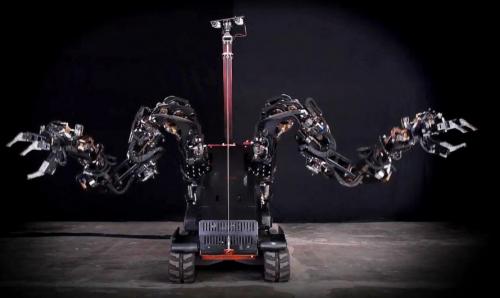
Breaking News
Chicago Homicide Rate: 2025 Analysis
 Tennessee Sues Roblox, Says Game is a 'Gateway for Predators' Targeting Children
Tennessee Sues Roblox, Says Game is a 'Gateway for Predators' Targeting Children
 Kushner and Witkoff Reportedly Draft $112B Plan to Turn Gaza Into 'Smart City'...
Kushner and Witkoff Reportedly Draft $112B Plan to Turn Gaza Into 'Smart City'...
 Christmas in Venezuela: What It Was Like After Socialism Destroyed the Country
Christmas in Venezuela: What It Was Like After Socialism Destroyed the Country
Top Tech News
 Perfect Aircrete, Kitchen Ingredients.
Perfect Aircrete, Kitchen Ingredients.
 Futuristic pixel-raising display lets you feel what's onscreen
Futuristic pixel-raising display lets you feel what's onscreen
 Cutting-Edge Facility Generates Pure Water and Hydrogen Fuel from Seawater for Mere Pennies
Cutting-Edge Facility Generates Pure Water and Hydrogen Fuel from Seawater for Mere Pennies
 This tiny dev board is packed with features for ambitious makers
This tiny dev board is packed with features for ambitious makers
 Scientists Discover Gel to Regrow Tooth Enamel
Scientists Discover Gel to Regrow Tooth Enamel
 Vitamin C and Dandelion Root Killing Cancer Cells -- as Former CDC Director Calls for COVID-19...
Vitamin C and Dandelion Root Killing Cancer Cells -- as Former CDC Director Calls for COVID-19...
 Galactic Brain: US firm plans space-based data centers, power grid to challenge China
Galactic Brain: US firm plans space-based data centers, power grid to challenge China
 A microbial cleanup for glyphosate just earned a patent. Here's why that matters
A microbial cleanup for glyphosate just earned a patent. Here's why that matters
 Japan Breaks Internet Speed Record with 5 Million Times Faster Data Transfer
Japan Breaks Internet Speed Record with 5 Million Times Faster Data Transfer
Meet "The Guardian" - Maybe The Scariest-Looking Robot Yet

While mimicking human dexterity has become one of the defining problems of robotics, the Guardian GT has a couple of advantages that make it more dexterous than its contemporaries: For example, the Guardian GT's control systems are kinematically equivalent to the human body. This allows the operator to control what's effectively a larger version of his or her own torso and arms.
The Guardian also employs force feedback so the operator can feel through the machine's hands. This creates a strange sensation when the operator is lifting a large object, like say a 1,000-pound pipe.
"That's a little disorienting, so we give a little bit of load into the arm," Wolff says. Meaning, the robot pushes back a tiny bit. "So instead of lifting a thousand pounds you feel like you're lifting five." (How it's able to do this without the herky-jerkiness of other robots comes down to special actuators, the bits that move and bend the arms. What exactly is special about them, Wolff declines to say, because he's a good businessman.)

 Advanced Propulsion Resources Part 1 of 2
Advanced Propulsion Resources Part 1 of 2

